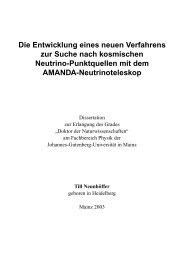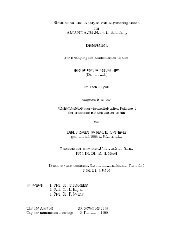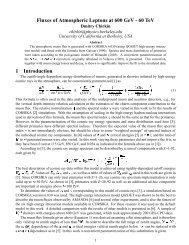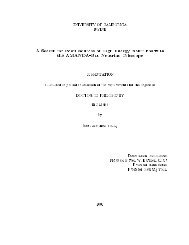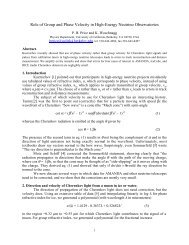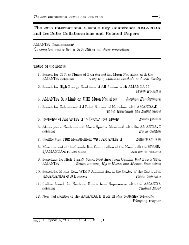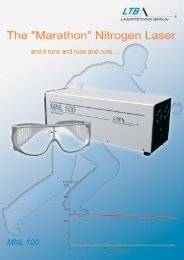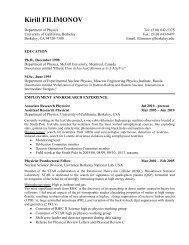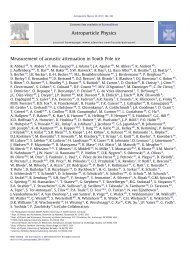Link to Fulltext
Link to Fulltext
Link to Fulltext
Create successful ePaper yourself
Turn your PDF publications into a flip-book with our unique Google optimized e-Paper software.
Detec<strong>to</strong>r<br />
Figure 6: Definition of effective area with infinite tracks<br />
The range of the muons is much larger than the distance between the detec<strong>to</strong>r and<br />
£<br />
the<br />
¢<br />
emission<br />
plane. Note that in this definition is angular dependent. In the same way, an effective<br />
volume (see Fig. 7) can be defined as:<br />
<br />
<br />
where again is the number of muons generated and is a volume whose dimensions are much<br />
larger than the range of the muons generated in it. The muons’ point of production is randomly<br />
distributed in the volume and their range follows a distribution upon which the effective volume<br />
is dependent. We can thus generalize the definition of an effective area <strong>to</strong> take in<strong>to</strong> account the<br />
finite range of the muons in the following way:<br />
£ <br />
¦<br />
<br />
¦<br />
¢¡<br />
<br />
<br />
<br />
<br />
£<br />
¦<br />
A<br />
14<br />
(21)<br />
¢<br />
(22)<br />
<br />
¡<br />
<br />
where is the mean range of the muon and the length of the side of the volume used parallel<br />
<strong>to</strong> the muons, which yields the mean number of muons crossing £<br />
£¡<br />
<br />
: . For a given<br />
effective area, a flux of short range muons will yield a smaller effective volume than long range<br />
muons.<br />
¡



